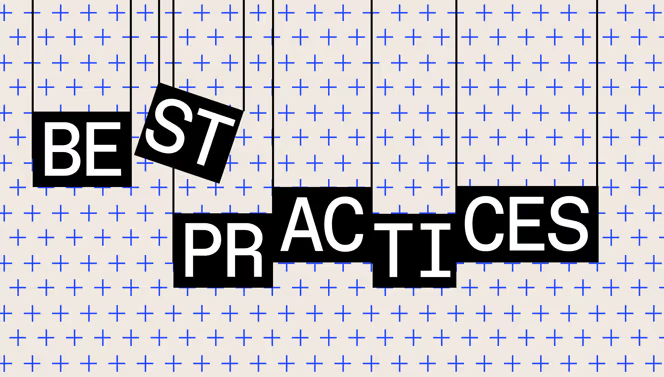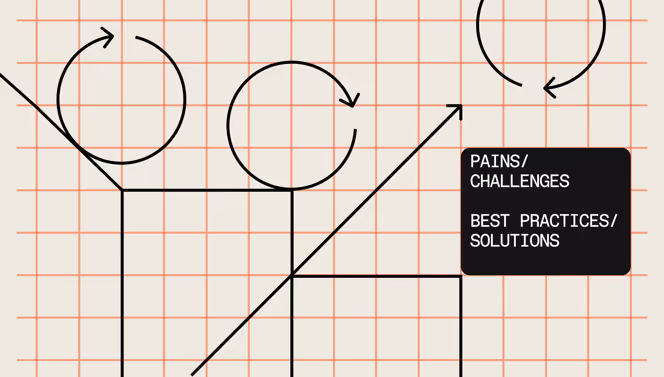The benefits of performance management: From driving productivity to improving results

Discover Workleap Officevibe's benchmark report on 12 key employee engagement metrics

There are plenty of traditions that are worth keeping, and then there are those that no longer serve us the way they used to. In this context, gone are the days of the traditional annual review that was the norm for so many years. These days, companies are taking a more modern approach to managing employee performance.
Enter the era of agile performance management — one that focuses on continuous feedback, regular check-ins, and ongoing development, and is a far better fit for today's ever-changing work landscape.
Recent years have shined a light on how organizations need to be agile in their ability to quickly adapt to new challenges and opportunities, meaning agile performance management process is better at helping employees stay engaged, motivated, productive, and yield better business results.
What is performance management?
In essence, performance management is an ongoing conversation between a manager and an employee about their job performance and how they can continue to improve, grow, and sharpen their skills. Throughout the year, this process helps set clear goals, measure progress, implement regular employee feedback, training, and coaching, and recognize areas of improvement and achievements, all with the goal of boosting individual performance and productivity.
The beauty of performance management is that it ultimately fosters an environment in which everyone can thrive. An added plus is that it also allows organizations to identify and address performance issues in real-time, rather than waiting for that old school annual performance review to roll around.
By definition, an agile performance management system is a method used to motivate employee performance and nurture employee development while remaining aligned with organizational and personal goals. Unlike the traditional approach, most known for its annual performance reviews, this approach is perpetual and ongoing.
Why is performance management important?
If a high-performing, productive workforce is what you're going for, then a performance management system is a must! When your employees get regular feedback, have a clear understanding of expectations, and have ongoing development opportunities, your organization can create a culture of continuous improvement so that everyone can achieve their goals. That goes for employees, teams, and your company as a whole.
By ensuring team alignment, and providing structures for managing, tracking, and evaluating employee performance, everyone gets to experience all the benefits of each performance management process. So let's explore those now.
[ov_cta id="5122370"]
10 Benefits of performance management
While performance management is a game-changer in many ways, we've picked 10 key benefits that explain why:
1. Increase retention
Every company wants to find ways to reduce turnover rates, and performance management can help do just that. When done right, performance management gives employees the support they need and a sense of purpose with their work. This creates a culture of continuous improvement where employees take ownership of their work and always strive to grow and do better within the organization.
Performance management also helps keep employees aligned with the company's mission and values, which is great for nurturing commitment and employee retention, making it a win for everyone.
So how can you improve employee retention? We've put together 8 strategies for keeping your people engaged!
2. Boost employee morale and engagement
When employees feel valued and supported in their role, they're more likely to experience a boost in morale. Checking in on what employees need, providing regular feedback and recognition, and giving coaching can improve engagement and job satisfaction. Pair this with opportunities for growth and professional development, and employees are more likely to be happy, motivated, and productive.
There are plenty of key factors that contribute to engagement and help create an emotional commitment between an employee and the organization they work for. Discover them all!
3. Identify training needs
By keeping the conversation going on a regular basis, it really makes it easier for managers to assess what's working well and where extra development is needed. This enables managers to choose the right kind of training to improve each individual employee's skills, and in turn their overall job performance. Think mentoring, workshops, and conferences that are aligned with their goals.
4. Define career paths
There's always room for growth. When employees have a clear understanding of what is expected of them in their current role and what they need to do to progress to the next level, it can really help them forge a career path that'll take them onwards and upwards towards success.
A great performance management system includes one-on-one career development talks that can help identify the skills and experience needed for advancement, and create concrete goal towards achieving their aspirations and plans for growth.
5. Set and track clear goals
A solid performance management system can help you set and track clear goals by providing the framework for defining SMART (Specific, Measurable, Achievable, Relevant, and Time-bound) goals and OKRs (Objectives and Key Results). These kinds of goal-setting systems make sure goals are clear, achievable, and aligned with the company's objectives. Regular performance management can help employees track their progress towards these goals and make adjustments as needed to ensure success every step of the way.
Our practical guide helps simplify the foundations of solid goal-setting by teaching you how to raise your game to get better results.
6. Reduce micromanagement
Not only is micromanagement time consuming, but it can also lead to low employee engagement, high stress levels, and even increased employee turnover — none of which are desirable.
The good news is that a solid performance management system can give managers the tools they need to run a tight ship without the need for micromanagement. It means they can focus more on their actual daily responsibilities while still being able to check in on employee progress. Everyone breathes easier and maintains their autonomy, which makes for greater trust between managers and employees.
Micromanagement may not be intentional, but it happens nonetheless. Good thing we've put together some simple questions to help you detect micromanagement (so you can then correct it!)
7. Build autonomy and accountability
Speaking of autonomy, proper performance management can help create a culture of autonomy and accountability where employees feel empowered to take ownership of their work and make decisions independently. By holding employees accountable for their performance while providing support and guidance when needed, it gives them the chance to soar and become the best version of themselves.
At the end of the day, greater autonomy leads to greater confidence, job satisfaction, and loyalty, all of which makes employees feel more motivated and engaged towards their's and their team's success.
8. Increase organizational performance
Beyond helping with individual performance, a performance management system also helps organizations align their employees, resources, and processes in order to meet their strategic goals and objectives. Having the right framework in place sets you up for organizational success and can even positively impact your bottom line (which we'll get to shortly).
9. Foster manager-employee relationships
In every kind of relationship, healthy communication is a foundational must. A performance management system helps to establish open and honest communication between managers and employees, which leads to better working relationships. Regular communication, performance reviews, and guidance also show that managers are truly invested in their employees' success.
Not sure where to start? We can help get you on the road to building better employee relations in 4 simple steps.
10. Improve the bottom line
Last but certainly not least, great performance management can help improve your company's bottom line, and the equation is simple: improving employee engagement, productivity, and retention rates is the recipe for greater customer satisfaction, and in turn greater business success.
Good vibes go a long way. In fact, engaged employees who have a more positive experience are more likely to produce better quality work and better client relationships. Not to mention the fact that on the other end of the spectrum, unhappy employees have the opposite effect, and are more likely to leave. Employee turnover is costly, which can also greatly affect your bottom line.
Drive productivity with effective performance management system
Now that you know the benefits of modern performance management, know that you don't need to go at it alone. In fact, performance management software like Officevibe can support you in your growth. We can help you achieve the progress and results you're aiming for by equipping you with a playbook for implementing frequent feedback and coaching so you can drive consistency and put your organization on the road to success.
Give HR and managers the clarity, confidence, and connection to lead better every day.


%20(1).avif)


.avif)
.avif)








